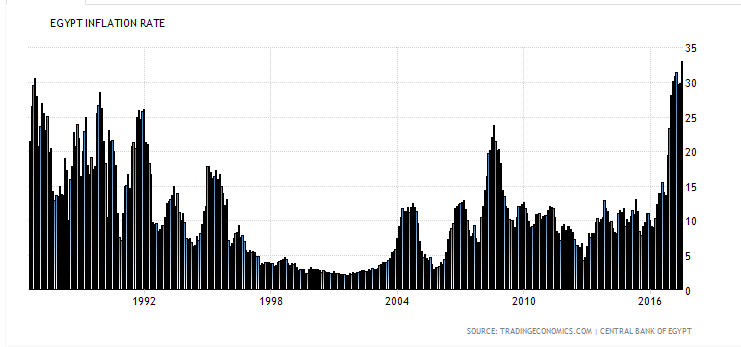Egypt’s headline inflation rose from 29.8 percent in June to 33 percent in July – its highest figure since June 1986.
In order to meet the term of the $12 billion IMF loan agreement, Egypt in June raised prices for commonly used fuel — 80-octane gasoline and diesel by 55 percent and doubled the price of gas canisters, used in the majority of households for cooking.
The government later increased electricity prices by more than 40 percent, followed by surges in public transportation fares and drinking water.
According to the Central Bank of Egypt, the country’s core inflation, which strips out volatile items like food, rose to 35.26 percent year-on-year in July from 31.95 percent in June.
In November 2016, Egypt floated its currency, slashing the value of the pound by half and triggering heavy inflation.
Fuel and electricity price increases went into effect at the start of the new fiscal year on July 1, for the second time in less than a year. The measures are part of an International Monetary Fund-backed reform effort aimed at cutting the budget deficit, curbing government spending and drawing in sorely needed foreign investments. – Bloomberg
Inflation Rate in Egypt averaged 9.25 percent from 1958 until 2017, reaching an all time high of 35.10 percent in June of 1986 and a record low of -4.20 percent in August of 1962.
Cost of food in Egypt has also spiked, rising by 43 percent year-on-year in July.



